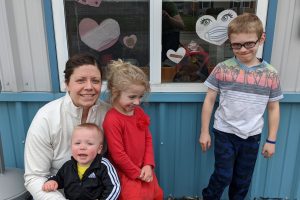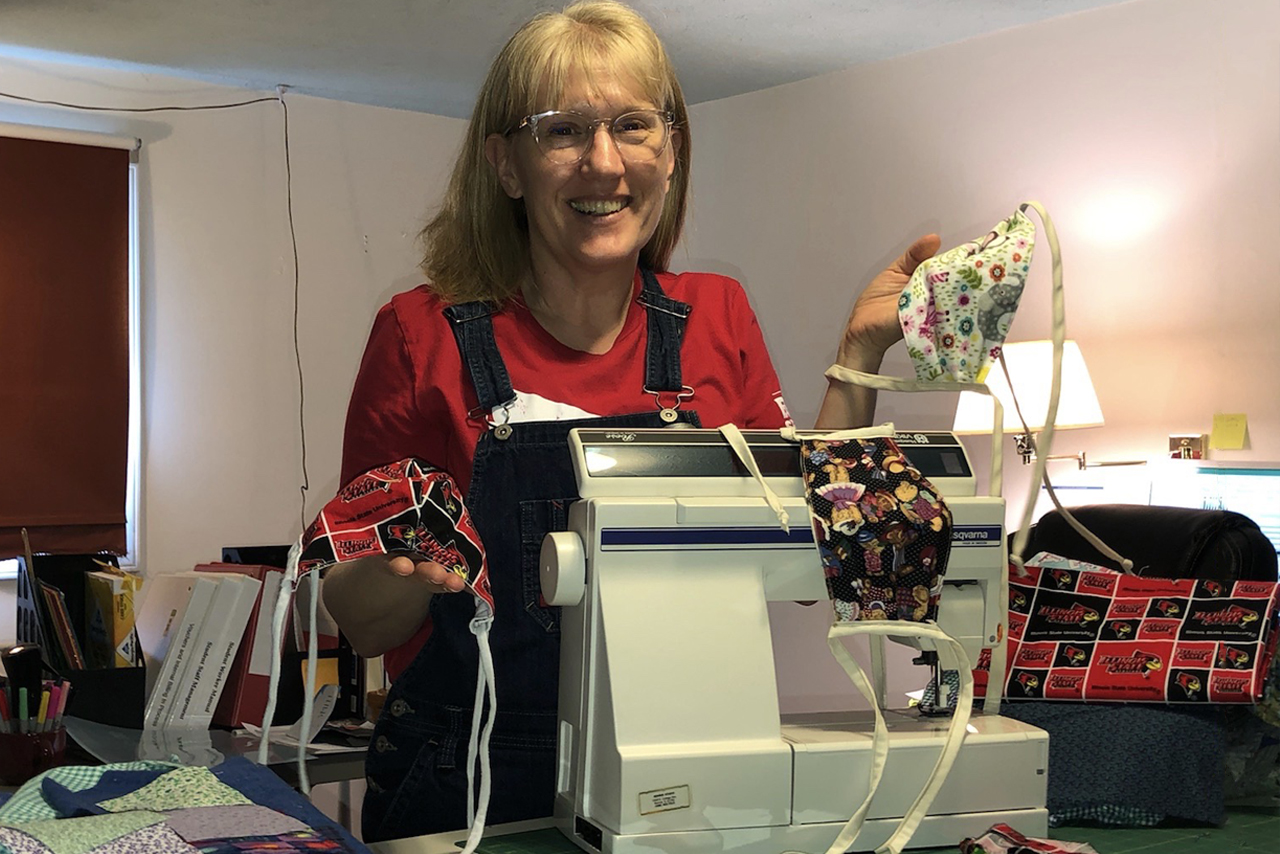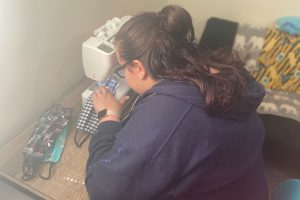Civic engagement is a core value of Illinois State University, and it’s more important than ever for Redbirds to be engaged, active participants within their communities. By practicing civic engagement, we’re promoting the quality of life for those around us.
“It is extremely important to continue to volunteer and/or practice civic engagement during times of crisis because many social service agencies and members of our community have increased needs,” said Dr. Katy Strzepek, director of the Center for Community Engagement and Service Learning (CESL).
Individuals can do important volunteer work even while staying at home. “We have many great ideas listed on our website about ways students, faculty, staff, and community members can volunteer virtually, such as becoming trained to help on a crisis text line or creating a video lessons for kids at the Boys and Girls Club about things such as how to tie your shoes or how to make a sandwich.”
Individuals can also volunteer from a distance by sending notes of encouragement to healthcare workers, essential workers, and first responders or by writing letters and creating artwork for nursing home residents who aren’t allowed visitors during this time.

Christine Bruckner, assistant director at CESL, and her children (left to right: Eamonn, Makenna, and Finnegan) pose by hearts in the window of their local fire station.
Many communities have encouraged residents to decorate their windows with hearts or rainbows to brighten spirits and bring smiles to local children. “My children love seeing and counting the hearts in windows when we go on walks,” said Christine Bruckner, assistant director of assessment, data management, and grant writing at CESL. “We worked together to make hearts for our windows at home, but the kids really enjoy the hearts at the fire station. They thought it was great that the hearts were wearing masks.”
People across the world are also volunteering at home by sewing masks to donate to friends, family, and essential workers. Blair Canedy, graduate assistant for community service projects, and Beth Porter, administrative aide at CESL, are both putting their sewing skills to work in this way.
“This is an unprecedented time where we, as a community, need to stand in solidarity at home,” said Canedy. “Being home bound, we now have more time on our hands. What better way to spend that by helping others!”
Porter agreed. “I make masks because it’s my way to give back to my community, using my talents and the resources I have on hand. In my own small way, if I can help contribute to the safety of our medical community, immune deficient family and friends, and others considered essential personnel, then I am all in.”
Porter is also active in local Facebook groups of mask makers, often sharing research she has done on techniques, materials, and patterns. Her research has been particularly impactful as mask makers struggle with supply shortages.
“Early on, when we saw rural area nursing homes and hospitals reaching out for cloth masks it struck me to do some research in the best fabric to use, sewing techniques, and pattern of masks to make. I contributed to these forums some of my findings as we navigated the process of making masks that we knew wouldn’t be N95 standard, but could help for those who would need more protection than a scarf. The requests began pouring in from all over Central Illinois and beyond.”
Giving back during times like this can also help those who are serving. “Volunteering helps the mental health of those who serve,” Strzepek said. “While it is a normal response to community trauma to feel overwhelmed, serving your community can help build resilience and can make you feel more connected, even if your service is online.”
Visit the CESL website for more information on ways that you can volunteer virtually.


